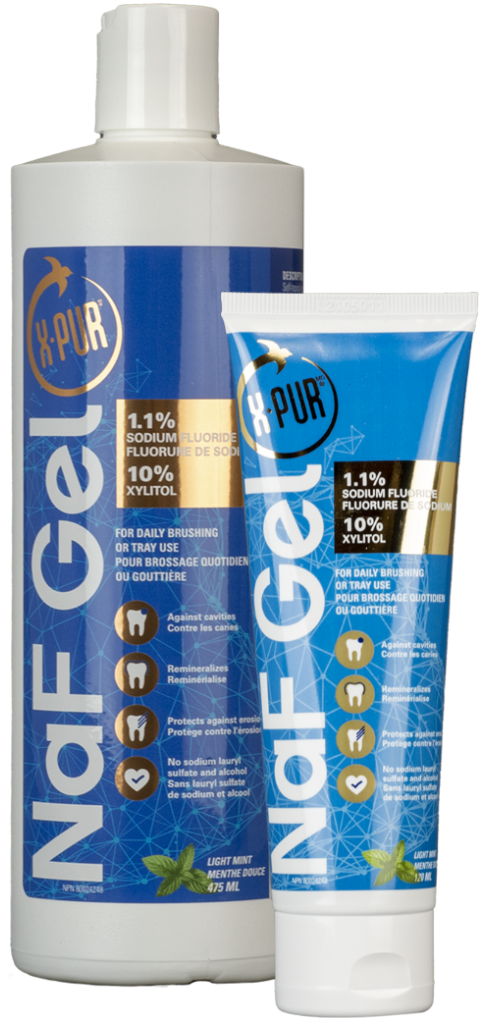
Schedule a Presentation With Us!
- PapaCarie for Caries Removal
- PerioMonitor Saliva Test
- Woodpecker Laser Smart Blue
- Woodpecker Endodontic

We use cookies!
We use cookies to improve your website experience and analyze traffic. These cookies are necessary for the site to function properly and help us understand how you use it. The information collected remains anonymous and is used for analysis purposes only. By continuing to browse our site, you accept the use of these cookies. If you do not want your data to be used in this way, please click decline. You can read our document on the potection of personal information (Law 25) here


Calcium is attracted by the receptor sites, forming calcium fluoride. The fluoride ion then combines with the calcium ion to form calcium fluoride, adding to the hydroxyapatite (97 % of enamel and 70 % of dentin) of the tooth, thus making it more resistant to acid dissolution.
• Sodium lauryl sulfate (SLS) free
• Sweetened with 10 % xylitol for a great taste
• Anti-caries
• Helps remineralize tooth enamel
Medicinal Ingredient
1.1 % Sodium Fluoride (5,000 ppm F)
Non-Medicinal Ingredients
Saccharin, carboxymethylcellulose, glycerin, mint flavor, purified water, sodium phosphate, xylitol
• High risk caries
• Oncology treatment
• Tooth sensitivity
Mint
80024248
BRUSHING
Adults and children 6 years and older
Once a day preferably at bedtime or following the recommendation of a dental professional
1. Use as a regular toothpaste.
2. Brush with a film of gel. Expectorate. (Children 6 to 16 : rinse mouth thoroughly)
3. Do not eat, drink or rinse for 30 minutes.
Children under 6 years of age
Consult a dental professional.
TRAYS
Adults
Once a day or following the recommendation of a dental professional
1. Brush and floss before wearing trays. Fill the grooves of the trays 1/3 full of gel. Do not over fill as it will extrude out.
2. Wear for 5 to 10 minutes. Expectorate.
3. Do not eat, drink or rinse for 30 minutes.
Xylitol is a 100% natural sweetener derived from vegetable sources. Twenty years of research shows xylitol efficacy treating dry mouth and reducing tooth decay.
Excellent product for use post-radiation therapy.
- Christie, a patient